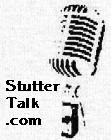Extending the Self-Help Movement in the Digital Domain
 |
About the presenter Greg Snyder, Ph.D., CCC-SLP, earned a Ph.D. from the Department of Communication Sciences and Disorders at East Carolina University. After graduation he was assistant professor in the Department of Hearing, Speech, and Language Sciences at Gallaudet University. Currently he is an assistant professor at the Department of Communicative Disorders at the University of Mississippi. |
 |
About the presenter Peter Reitzes, MA, CCC-SLP, is an adult stutterer and an ASHA certified, speech-language pathologist working in an elementary school and in private practice in Brooklyn, New York. Mr. Reitzes is the author of 50 Great Activities for Children Who Stutter: Lessons, Insights, and Ideas for Therapy Success (PRO-ED), is co-editor (with Gregory Snyder) of the Journal of Stuttering Therapy, Advocacy and Research (www.JournalOfStuttering.com), is co-host of the Stutter Talk podcast, and is an adjunct professor at St. John's University and Touro University. Mr. Reitzes may be contacted at www.StutterNY.com. |
 |
About the presenter Eric Jackson is a person who stutters and a graduate student in the Speech-Language Pathology program at Brooklyn College in New York. As a Graduate Fellow in that program, he teaches an undergraduate course in public speaking. Eric is 29 years old, and is also a musician in two Brooklyn-based bands. |
Extending the Self-Help Movement in the Digital Domain
by Greg Snyder and Peter Reitzes
New York and Mississippi, USA
Stuttered speech is a pathology of unknown cause and with no known cure. People who stutter may, and often do, experience negative feelings in response to communication difficulties (Andrews & Cutler, 1974; DeNil & Brutten, 1991; Vanryckeghemm & Brutten, 1996, 1997). Further, stuttering may potentially hinder a person's quality of life specifically in regards to social, educational and professional opportunities and performance (Klein & Hood; Klompas & Ross, 2004; Yaruss & Quesal, 2004). As one adult explained: " Stuttering is a deep feeling of not being able to survive because we cannot speak. As a kid, my whole body was affected, I saw my whole future crumble: that was not reality, but just a feeling that seemed a reality." (Guerin, 2003, par. 2)
While existing treatments can help some clients, they are far short of a cure, and the reductions in stuttering frequency are unsatisfactory to many people who stutter (Yaruss, Quesal, Reeves, et al., 2002). For many, the primary problem of stuttering is not stuttered speech, but rather the impact of stuttering on one's locus of control (i.e., self-empowerment) and overall quality of life. One teenager explained, "When I was in elementary school, I anticipated that as an adult I would have a job that did not require talking to other people" (Cepler, 2003, p. 3). This is a clear example of how a handicap is created when a person allows stuttering to limit and dictate life choices.
Many speech-language pathologists are uncomfortable treating people who stutter and often do not feel qualified or able to do so (Brisk, Healey & Hux, 1997; Cooper & Cooper, 1996; Kelly, Martin, Baker, et al., 1997; St. Louis & Durrenberger, 1993). For example, one of the authors was instructed by a professor in graduate school that it was "Unethical for a speech pathologist to ask people who stutter how they feel." However, there is a growing understanding and appreciation for how stuttering impacts the quality of one's life (Manning, 1999; Reitzes, 2006a; Sheehan, 1970; Shapiro, 1999; Van Riper, 1982; Yaruss & Quesal, 2006).
Many people who stutter have benefited from the support and mentorship available through self-help groups and organizations (Bradberry, 1995; Ramig, 1993; Reitzes, 2006b; Yaruss, Quesal, Reeves, et al., 2002). Self-help groups have been credited with reducing feelings of isolation and loneliness (Manning, 2001; Reardon & Reeves, 2002; Reitzes, 2006a, 2006b), offering mentorship and role-model opportunities (Reitzes, 2006b), increasing self-image and confidence (Yaruss, Quesal, Reeves, et al., 2002), providing information about the disorder and treatment options (Yaruss, Quesal, & Murphy, 2002) and enabling people who stutter to approach stuttering in non-avoidant ways (Bloodstein, 1995; Starkweather & Givens-Ackerman, 1997). Cochrane (2004) explained that participants of self-help "share and profit from a commonality of experiences. They are able to offer one another differing perspectives on beliefs, feelings and therapeutic issues, and are able to, as a group, challenge negative thoughts" (par. 3). Manning (2003) noted, "The support of others who stutter is essential, and the value of support groups cannot be emphasized enough" (p. 120). After all, who is better to address quality of life issues for this population than the population itself?
The self-help movement is currently limited, but emerging. The movement serves to provide role-models, mentorship, camaraderie, and peer support for people who stutter, and is easily integrated as a component of group speech therapy (Murphy, 1999; Murphy & Quesal, 2002; Ramig & Bennet, 1997; Sisskin, 2002; Van Riper, 1973; Williams & Dugan, 2002), camps (Bennett & Batik, 1998; Blom, 2000; Hoelzl, 1999; Kawaski, 2000; Sable, 2000), theatre groups (Alexander, 2002, 2004, 2006), internet services such as electronic discussion groups and mailing lists (Shields & Kuster, 2003; Starkweather & Givens-Ackerman; 1997; Stoudt & Ouelette, 2004), supportive videos (Reitzes, 2005) and self-help publications (Bloodstein, 1995).
Unfortunately, local self-help groups and related services such as theatre groups for people who stutter remain limited to certain areas of the country and around the globe. National self-help conventions are often cost or distance prohibitive. Further, many people who stutter may not be willing to attend a national or international convention as their first experience with self-help. Taking the self-help movement into the digital domain addresses some of these issues. Anyone with Internet access can access support, information, mentorship and friendship. Distance is no longer an issue and the cost of participation is significantly reduced. In fact, a great number of Internet services pertaining to stuttering such as stuttering forums and chat rooms and memberships to electronic mailing lists are free.
The StutterTalk audio podcast (available at http://www.StutterTalk.com) was created as a natural extension of the self-help movement for people who stutter. It is the goal of StutterTalk to create a show that features the major components of self-help: camaraderie, friendship, mentorship and support. In essence, StutterTalk is a traditional self-help discussion combined with the self-publishing and distribution powers of the Internet.
A podcast is an audio or video file, similar to a prerecorded broadcast, which is posted on the internet and is associated with a Really Simple Syndication (RSS) feed. While there are several ways to access podcasts, StutterTalk is available by direct download (http://www.StutterTalk.com), or by subscribing to an RSS feed (http://stuttertalk.podOmatic.com/rss2.xml) with an aggregator (feed reader) such as iTunes. Listeners can then play the files (episodes) on a media player such as Windows Media Player, iTunes, or portable MP3 players. You can access a short sample of a podcast, co-hosted by Greg Snyder, Peter Reitzes and Eric Jackson.

Acknowledgements: Peter Reitzes and Greg Snyder should be considered equal authors of this paper.
References
Alexander, T. (2002, October 1). Our time -- a theatre company for people who stutter. Paper presented at the 2002 International Stuttering Awareness Day Online Conference. Retrieved August 25, 2007 from http://www.mnsu.edu/comdis/isad5/papers/alexander/alexander.html
Alexander, T. (2004, October 1). Our time our voice. Paper presented at the 2004 International Stuttering Awareness Day Online Conference. Retrieved August 25, 2007, from http://www.mnsu.edu/comdis/isad7/papers/alexander7/alexander7.html
Alexander, T. (2006). Our Time provides kids their time. The Journal of Stuttering Therapy, Advocacy and Research, 1, 33-35. Retrieved August 25, 2007, from http://www.journalofstuttering.com/1-1/Alexander.2006.JSTAR.1.33-35.pdf
Andrews, G., & Cutler J. (1974). Guilt, shame, and family socialization. Journal of Family Issues, 18, 99-123.
Bennett, E., & Batik, J.M. (1998, October 1). A perspective on summer camps for children who stutter: 1991-1998. Paper presented at the 1998 International Stuttering Awareness Day Online Conference. Retrieved August 25 2007, from http://www.mnsu.edu/comdis/isad/papers/bennett.html
Bloodstein, O. (1995) A handbook on stuttering (5th ed). San Diego, CA: Singular Publishing Group.
Blom, A. (2000, October 1). Organizations' outreach to children and teens who stutter: Swedish stuttering association SSA: Children camps - a reward for all involved. Paper presented at the 2000 International Stuttering Awareness Day Online Conference. Retrieved August 25 2007, from http://www.mnsu.edu/comdis/ISAD3/ papers/ssr.html
Bradberry, A. (1995). The role of support groups and stuttering therapy. Seminars in Speech and Language 18, 391-399.
Brisk, D.J., Healey, E.C., & Hux, K.A. (1997). Clinician's training and confidence associated with treating school-age children who stutter: A national survey. Language, Speech, & Hearing Services in Schools, 28, 164-175.
Cepler, M. (2003). From that day forward. In J. Ahlbach & L. Caggiano (Eds.) The best of reaching out (pp. 3-4). Pacifica, CA: FRIENDS.
Cochrane, S. (2004, October 1). Intensive treatment: Let's take a look at teens. Paper presented at the 2004 International Stuttering Awareness Day Online Conference. Retrieved August 25, 2007, from http://www.mnsu.edu/comdis/isad7/papers/ cochrane7/cochrane7.html
Cooper, E.B., & Cooper, C.S. (1996). Clinician attitudes towards stuttering: Two decades of change. Journal of Fluency Disorders, 21, 119-135.
DeNilm, L. & Brutten, G.J. (1991). Speech-associated attitudes of stuttering and nonstuttering children, Journal of Speech and Hearing Research, 34, 60-66.
Guerin, C. (2003, April 21). Stuttering chat: Online support for people who stutter. [Msg. 18543]. Message posted to Ref-Links electronic mailing list, archived at http://groups.yahoo.com/group/stutteringchat/message/18543
Hoelzl, K. (1999. October 1). Summer camp for children and teenagers who stutter. Paper presented at the 1999 International Stuttering Awareness Day Online Conference. Retrieved August, 25, 2007 from http://www.mnsu.edu/comdis/isad2/papers/hoelzl.html
Kawaski, M. (2000, October 1). Japan stuttering project's 11th summer camp for children who stutter and their parents, 2000. Paper presented at the 2000 International Stuttering Awareness Day Online Conference. Retrieved August 25, 2007, from http://www.mnsu.edu/comdis/ISAD3/papers/kawasaki.html
Kelly E, Martin J.S., Baker E. K., Rivera, N.I., Bishop, J.E., Krizizke, C.B., Stettler, D.S., & Stealy, J.M. (1997). Academic and clinical preparation and practices of school speech-language pathologists with people who stutter. Language, Speech, and Hearing Services in Schools 28, 195-206.
Klompas, M. & Ross, E. (2004). Life experiences of people who stutter, and the perceived impact of stuttering on quality of life: personal accounts of South African individuals. Journal of Fluency Disorders, 29, 275-305.
Klein, J. F. & Hood, S. B. (2004). The impact of stuttering on employment opportunities and job performance. Journal of Fluency Disorders, 29, 255-273.
Manning, W. (1999). Progress under the surface and over time. In N. Bernstein Ratner & E. C. Healey (Eds.), Stuttering research and practice: Bridging the gap (pp. 123-130). Mahwah, NJ: Lawrence Erlbaum Associates Inc.
Manning, W.H. (2001). Clinical decision making in fluency disorders. San Diego, CA: Singular Publishing.
Manning, W. H. (2003). Finding your own path without professional help. In S. Hood (Ed.), Advice to those who stutter. (2nd edition) (Publication 0009) (pp. 117-123). Memphis, TN:
Murphy, B. (1999). A preliminary look at shame, guilt, and stuttering. In N.B. Ratner & E.C. Healey (Eds.), Stuttering research and practice: Bridging the gap (pp. 131-143). Hillsdale, NJ: Erlbaum.
Murphy, W.P., & Quesal, R.W. (2002). Strategies for addressing bullying with the school-age child who stutters. Seminars in Speech and Language, 23, 205-212.
Ramig, P. (1993). The impact of self-help groups on persons who stutter: A call for research. Journal of Fluency Disorders 18, 351-361.
Ramig, P.R., Bennett, E.M. (1997). Considerations for conducting group intervention with adults who stutter. Seminars in Speech and Language, 18, 343-356.
Reardon, N.A, & Reeves, L. (2002). Stuttering therapy in partnership with support groups: The best of both worlds. Seminars in Speech and Language, 23, 213-218.
Reitzes, P. (2005). Students who stutter: Integrating a children's video on stuttering into therapy. Advance for Speech-Language Pathologists and Audiologists, 15(50), 16.
Reitzes, P. (2006a). 50 great activities for children who stutter: Lessons, insights, and ideas for therapy success. Austin, TX: Pro-Ed.
Reitzes, P. (2006b). Providing mentors, role models, and peer support for children who stutter. The Journal of Stuttering Therapy, Advocacy and Research, 1, 16-28. Retrieved August 25, 2007, from http://www.journalofstuttering.com/1-1/Reitzes. 2006.JSTAR.1.16-28.pdf
Sable, J. (2000, October 1). Working with kids who stutter in after-school and summer camp groups. Paper presented at the 2000 International Stuttering Awareness Day Online Conference. Retrieved August 25, 2007, from http://www.mnsu.edu/comdis/ISAD3/papers/sable.html
Shapiro, D. (1999). Stuttering intervention: A collaborative journey to fluency freedom. Austin, TX: Pro-Ed.
Sheehan, J. G. (1970). Stuttering: Research and therapy. New York: Harper and Row.
Shields, L W., & Kuster, J.M. (2003). Find good resources for treating school-age children who stutter. Seminars in Speech and Language, 24, 7-12.
Sisskin, V. (2002). Therapy planning for school-age children who stutter. Seminars in Speech and Language, 23, 173-180.
Starkweather, C.W., & Givens-Ackerman, J. (1997). Stuttering. Austin, TX: Pro-Ed.
St. Louis, K. O., & Durrenberger, C. H. (1993, December). What communication disorders do experienced clinicians prefer to manage? Asha, 35, 23-35.
Stoudt, B.G., & Ouelette, S.C. (2004). Making room for words: people who stutter on the internet. Qualitative Research in Psychology, 1, 175-194.
Van Riper, C. (1973). The treatment of stuttering (2 ed.). Englewood Cliffs, NJ: Prentice Hall.
Van Riper, C. (1982). The nature of stuttering (2nd ed.). Englewood Cliffs, NJ: Prentice Hall.
Vanryckeghem, M. & Brutten, G.J. (1996). The relationship between communication attitude and fluency failure of stuttering and nonstuttering children, Journal of Fluency Disorders, 21, 109-118.
Vanryckeghem, M. & Brutten, G.J. (1997). The speech-associated attitude of children who do and do not stutter and the differential effect of age, American Journal of Speech-Language Pathology 6, 67-73.
Williams, D.F., & Dugan, P.M. (2002). Administering stuttering modification therapy in school settings. Seminars in Speech and Language, 23, 187-194.
Yaruss, J.S., & Quesal, R.W. (2004). Stuttering and the international classification of functioning, disability, and health (ICF): An update, Journal of Communication Disorders, 37, 35-52.
Yaruss, J.S., & Quesal, R.W. (2006). Overall assessment of the speaker's experience of stuttering (OASES): Documenting multiple outcomes in stuttering treatment. Journal of Fluency Disorders, 2, 90-115.
Yaruss, J.S., Quesal, R.W., & Murphy, B. (2002). National Stuttering Association members' opinions about stuttering. Journal of Fluency Disorders, 27, 227-242.
Yaruss, J.S., Quesal, R.W., Reeves, L., Molt, L.F., Kluetz, B., et al. (2002). Speech treatment and support group experiences of people who participate in the National Stuttering Association, Journal of Fluency Disorders, 27, 115-134.
August 30, 2007

